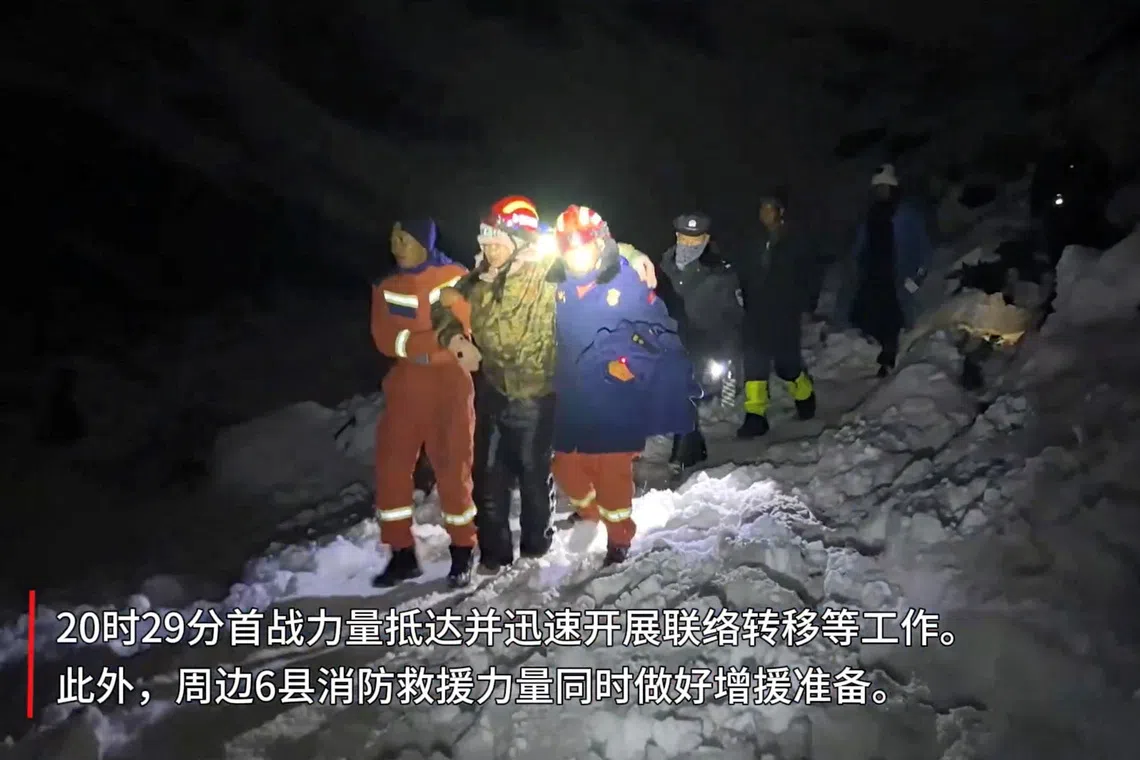All stranded Everest hikers evacuated from remote Tibetan valley
Sign up now: Get insights on Asia's fast-moving developments

Tibetan firefighters rescuing trekkers from Mount Everest after they were stranded by a blizzard.
PHOTO: REUTERS
Follow topic:
BEIJING – Rescuers guided all the remaining trekkers near the east face of Mount Everest in Tibet to safety on Oct 7, including hundreds of local guides and yak herders, authorities said, ending one of the largest search-and-rescue operations in the region.
Hundreds of hikers were stranded in deep snow over the weekend
Snow fell throughout Oct 4 in the valley, which lies at an average altitude of 4,200m. On Oct 5, rescuers had guided about 350 hikers to safety.
According to an earlier Reuters report, citing a source, the remaining 200 or so hikers were expected to reach safety by Oct 7
A total of 580 trekkers along with more than 300 guides, yak herders and other support staff were evacuated, the official Xinhua news agency reported on Oct 7 evening.
The snowstorm also thwarted the plans of climbers guided by US-based Madison Mountaineering to summit Cho Oyu, an 8,188m peak on China’s border with Nepal.
Karma valley was first explored by Western travellers a century ago. In recent years, with the development of the Everest region in Tibet as a major tourism draw, the area has attracted an increasing number of visitors. More than 540,000 tourists visited the region in 2024, setting a new record.
The Everest region remains temporarily closed to the public, Xinhua reported, including the Karma and Rongshar valleys, as well as Cho Oyu.
The heavy snowfall over the weekend also affected hundreds of hikers in other parts of western China, including Xinjiang, Qinghai and Gansu. At least one died, due to a combination of hypothermia and acute mountain sickness. REUTERS

